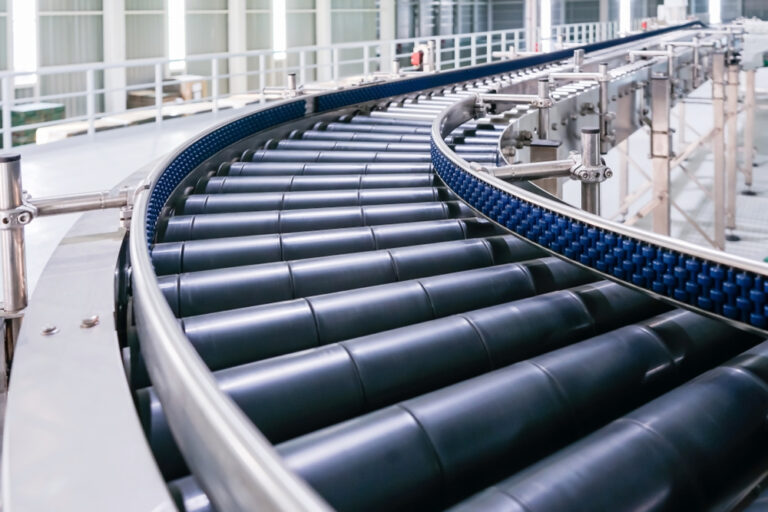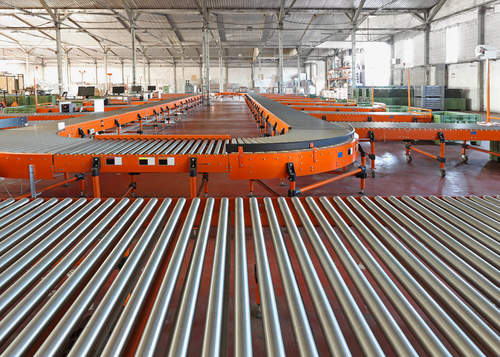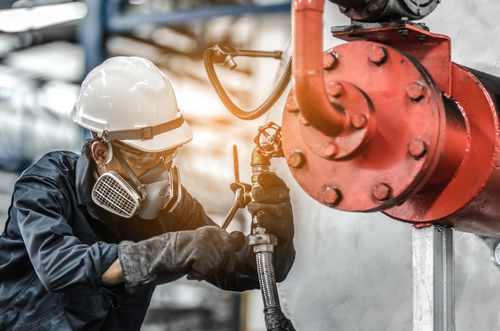Fall protection systems are essential to many industrial workspaces. Many fall protection systems are designed to prevent workers from falling from elevated surfaces, like roofs, scaffolding and ladders. Each system consists of its own unique set of features and benefits.
What are the most common types of fall protection systems and how will they work in your work environment? What if you need a custom solution? Keep reading to find out more.
Types of Fall Protection Systems
There are many types of fall protection systems; however, the right choice for you will depend on your commercial space needs. Read through these unique fall protection designs and consider what might be best to keep your employees safe. Mathews Mechanical is always here to advise your team on the right solution for your needs.
Personal Fall Arrest Systems
Personal fall arrest systems (PFAS) is a combination of equipment and techniques used to arrest an individual’s fall from an elevated surface. This type of fall protection system typically includes a full-body harness, a connecting lanyard or self-retracting lifeline and an anchorage point. The harness is worn by the worker and is connected to the connecting device, which is then connected to the anchorage point.
In the event of a fall, the connecting device will activate and arrest the fall, preventing the worker from hitting the ground. PFAS are used in construction, roofing and other industries where workers frequently work at heights.
Personal Fall Restraint System
A personal fall restraint system (PFRS) is a system that is designed to prevent a worker from falling from an elevated surface by keeping them within a certain area. This system is designed with a full-body harness, connecting a lanyard or self-retracting lifeline and an anchorage point. This system works similarly to the PFAS. However, its focus is on creating safety by holding workers within a secure safe.
The connecting device is designed to keep the worker within a certain distance of the anchorage point, preventing them from reaching the edge of the elevated surface. PFRS are installed in places where workers need to access elevated surfaces but don’t need to move beyond a certain point, such as maintenance and inspection tasks.
Guardrail System
A guardrail system is a barrier that prevents workers from falling from dangerous heights. Guardrail systems include posts, top rails, midrails and toe boards. The posts are anchored to the elevated surface, and the top rail, midrail, and toe board are placed on top of the posts to create a barrier. Guardrail systems are regularly used in construction, roofing and other industries where workers are frequently working at heights.
Safety Net System
This type of fall protection system catches a falling worker and prevents them from hitting the ground with its careful design. Safety net systems consist of a net, anchorage point and support system. The net is placed beneath the elevated surface, and the anchorage point is used to secure the net to the surface. The support system holds the net in place and prevents it from sagging. Safety net systems are utilized in construction, roofing, and other industries where workers are frequently working at heights.
Fall Arrest Ladder System
A fall arrest ladder system is a ladder that has been designed to provide fall protection while climbing. This type of fall protection system is made with a ladder, anchorage point and a connecting device. In the event of a fall, the connecting device will activate and arrest the fall, preventing the worker from hitting the ground. Fall arrest ladder systems are frequently installed in places where workers need to access elevated surfaces by ladder, such as roofing and maintenance.
Travel Restraint System
The travel restraint system (TRS) was developed to prevent a worker from falling while moving along an elevated surface. The harness is worn by the worker and is connected to the connecting device, which is then connected to the anchorage point. The connecting device is designed to keep the worker within a certain distance from the anchorage point, allowing them to move along the surface while keeping them safe from falling. TRS are used when workers need to move along an elevated surface to access different areas, such as maintenance and inspection tasks on bridges, towers, or pipelines.
Fall Protection with Mathews Mechanical
Mathews Mechanical has been supporting businesses with numerous types of fall protection systems for years. What is it like working with our team? In this case study, you can see a fall protection project in a commercial rail yard.
Once your fall protection system is installed, you must ensure it’s up to code with OSHA standards and government regulations. The Mathews Mechanical team can help you maintain whatever type of fall protection systems you have and spot potential problems before they become a pressing issue.
Learn more about how Mathews Mechanical can work to create a fall protection system that fits the needs of your business. Our team looks forward to supporting you as you create a safe working space for your employees.






